A great tip to share with struggling long jumpers in AthleticsMy grade 2 students were struggling with understanding the concept of jumping as far as you can in running long jump this week. I completely get that being able to sprint up to the line and take off of one foot, jumping as far as you can requires a certain degree of physical coordination and ability. Every year that I teach running long jump there are always some kids who really have difficulty executing this maneuver. There are always a handful who cannot do it even by the end of the unit, so I decided to have a bit of fun with it today to get them not only doing, but thinking as they do. After watching one student after another not be able to actually jump from the line into the sand pit, I stopped them all. The grade 6 class was using the same sand pit to work on their triple jump. I asked one of the grade 6 students to demonstrate the proper long jump technique as the grade 2 students watched. Just before the grade 6 student was about to take off down the lane for the pit, I laid my body across the sand, just in front of the jump line and told the grade 6 student to imagine I was her grandma. "Do you want to squish grandma?" I asked. Of course all the grade 2 and all of the grade 6 students busted out in laughter. The grade 6 student said "NO", then proceeded to sprint down the lane, jump perfectly from the line, soaring through the air directly over me. After a big round of applause from the grade 2s, I got up and told my students that they had to imagine the same thing. They had to pick someone or something that they loved and imagine it laid out just past the jump line. I asked the students to share what or who was the imaginary thing or person laid out before them. Here were some of their answers: Grandma Grandpa Both Grandma and Grandpa My dog My bike My Mom and Dad Once I had this idea firmly planted in their head, I took my shoes off and placed them on the ground directly ahead of the jump line. Another adult also donated their shoes to place ahead of the other jump line as we were using 2 lanes for running long jump. I asked them to visualize that our shoes were the person or thing they had chosen not to SQUISH. Away they ran and jumped! I wasn't surprised that almost every single student could execute running long jump properly taking off from the line and jumping clear into the pit. Some were kind of doing a leaping step landing in the pit on one foot, but I was able to work on the proper landing technique the rest of class with these students.
We had a lot of fun doing it and the kids were laughing away making references to having saved grandma or their dog. I'm sure many of you have your own effective strategies that you use to get your students thinking about proper running long jump technique. I wanted to share the simple one that I used today with you all. Most of the students in the photos below were ones who COULD NOT execute the proper long jump technique before. This simple and fun technique got them thinking their way through and doing the activity effectively. !00% of the students said that this visualization helped them to be able to jump into the sand pit properly. Have a great week. Please share any ideas that you use for long jump in the comment box below! Happy Jumping!
5 Comments
Exploration, creating, refining, performing in this unitMy grade 5 movement composition unit this year was indeed a journey of ups and downs, but in the end, my students produced some impressive work. I originally had a grand vision of creating digital portfolios to capture major learning moments during the unit, but had lots of trouble rolling the portfolios out on a new operating system that our school is using (Microsoft 365). This set us back a bit, but we were able to make some major headway during the last phase of this unit. During the first part of the unit, the immersion phase, I had the students explore a number of different types of movement composition related activities in order to stretch their thinking and to understand that the unit is about more than dance itself. That there are multiple ways to connect movement with music and that we can find joy in this process. One of my main goals straight away in this unit was to get my students tuned into the power of feedback and to create an environment that students chose to seek out feedback from their peers. I did this through a specific line of questioning that helped to stimulate discussion about the important elements of movement composition and how we can improve upon these areas. I wrote a blog post earlier in the unit about unpacking the big ideas in this unit and to use these big ideas as a spring board to deepen learning. I'd like to revisit the visuals that I created based upon student ideas to set the stage for the learning that took place the rest of the unit. What is important to understand is that throughout this unit, the students were required to create and refine a number of short mini-routines in several different areas of movement composition such as individual and partner balance routines, skipping routines, juggling scarves routines, balance beam routines (using narrow benches rather than actual balance beams), dance routines, and stomp routines. However, it didn't matter what type of routine it was that they were working on, every single time the students had to create and refine these routines, important student learning outcomes were being made very explicit in order to give them specific direction and focus. Peer feedback became a critical part of this process from day one of the unit. There was a lot of structure to the learning that was taking place that required deep planning. It was great to see the students seek out their peers to give and receive valuable, authentic feedback to and from one another. This helped to really set the stage for feedback to play even more of an important role as they planned their final movement composition routines. For this summative assessment task , the students had to create a movement composition routine of their choice that last between 3-4 minutes. They were able to choose their own music and props as well. At this point in the unit, I no longer needed to remind them that they should be seeking feedback in order to improve upon their routines. Because we had already had several important discussions related to the importance of feedback, the students had understood this and were taking action in this area. We ended the unit off with groups performing their final routines for their peers. Check out the video below to see a glimpse into a couple different dance routines. As well, I've included some examples of student assessment for you to check out. I love getting my students to reflect on their performance in a unit and to share their valuable thoughts. As you can see, I embedded a jpeg on the assessment sheet of the actual visuals that were used during the unit to prompt their thinking. I was pleased with this unit despite having the tech difficulties at the start. Thanks for reading! A fun series of 5 relay games in Athletics Every year I use this game series in my Athletics unit from grades 2-5. The students thoroughly enjoy it and are super active throughout the entire series . In the video below you can see 5 different versions of the game that build in complexity at each stage. In the 5th stage of the game, I handed ownership over to the students to create an additional level of difficulty. you'll see exactly how this was done as you watch the video. Multiple skills are being worked on in these activities, so I encourage you to try it out with your students. I promise you that they will love it. If you come up with further modifications to these games, please let me know as I would love to try them out. Thanks. Hope you enjoy it!! Practicing the art of giving quality feedback in Athletics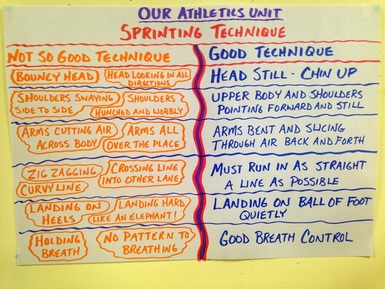 Over the past few classes my students from grades two to five have been working on breaking down sprinting technique into micro-components. The challenge is getting them to understand proper sprinting technique but to do so in a kid-friendly way that isn't overly pedantic or draining to them. I've been working on getting them to be able to break down technique in a fun way that was done in chunks rather than throwing everything at them at once. I created the visual you see to the left, based on student voice. What you see in the visual is straight from them, I just collected their answers and created the visual in a way that shows both do's and do nots when it comes to sprinting technique. Now that we have concluded this phase of Athletics, it was time to put what they know into active practice, so I posted the visual for my grade 2 students to check out when they came into PE today. However, before elaborating on how I was going to get my students to put what they know into prctice, I want to share with you a great video that I used early on in the unit to help the students begin to break down the sprinting technique. I used this video last year as well in the Athletics unit and re-visited it again this year. Check out the 1-minute video of Usain Bolt below. We dug deep into this video in the second class of our Athletics unit.  The Main Aims of Today's Grade 2 PE Experience When the students came into class today, we checked out and discussed the visual of good sprinting technique. This took about 5 minutes to go over with my students but it was imperative to do so as the main aim of the class was to partner them up with grade 8 students who were going to be running the 400 meters in their PE class. Together with the grade 8 PE class, we went out to the track . The grade 2 students were specifically instructed to watch their grade 8 partner run the 400 meters and to provide quality, specific, and meaningful feedback once they finished the run. My students know that simply saying things like, "You were really fast" or " It looked like your technique was good" is NOT GOOD ENOUGH. They were told that they must be specific and tell their grade 8 partner things that they may have done well and things definitely needing improvement. Feedback is such a powerful strategy to not only improve upon our own performance, but in giving feedback students are essentially consolidating and solidifying important things that they must know and understand in regards to their own learning in PE. Check out the very short video below to get a glimpse into a couple of grade 2 students giving feedback to their much older and bigger peers. What Ivan Fernandez Anaya can teach us all about authentic sportsmanshipWe are a couple of weeks into our Athletics Unit here at Nanjing International School in China. Athletics is one of my favorite units to teach because there are a multitude of opportunities to address the big ideas and concepts related to perseverance, grit , effort, and sportsmanship. Of course other units offer our students similar learning opportunities, but Athletics provides that very special experience to touch upon the the important role that personal excellence plays in our lives. Whenever possible, I try to find inspiring stories to share with my students to get them to understand that we can take valuable lessons learned in PE and transfer them over to real life. Doing so provides an internal frame of reference and makes learning much more relevant and applicable outside of our subject area. If I can achieve this aim, I feel as though I am not only providing some genuine learning experiences to my students, I'm also emphasizing the powerful role that physical education plays in a curriculum. Using provocations to draw in my students is an essential part of the learning that takes place in my PE program . Developing those emotional hooks is a very powerful part of teaching and the research supports just how important it is . I've had a number of discussions with a good friend of mine, Dr. Dean Dudley, about the different teaching strategies that I use in PE. He is always my go to guy when it comes to helping me to better understand what the research says about good teaching practice. Although I knew that using provocations in the right way was a powerful teaching strategy, it was Dean who helped me to better break down the actual process in which I use provocations to enhance learning . Dean was then able to provide me with some valuable research by John Hattie that supports the idea that creating those emotional hooks with our students helps to pave the way for authentic learning. He helped me to better understand the process of my own teaching and to have research to back it up. Instead of blasting my students with powerful provocations at the beginning of the Athletics unit as I have done in the past, I decided to change things up a bit. What I am doing differently is spreading these provocations out over the entire unit, giving them them little glimpses of inspiration and motivation steadily throughout. This allows me to have continued discussions with my students about the big ideas and concepts related to success in Athletics. Provocation of the Day We can discuss sportsmanship with our students until we are blue in the face and cannot breathe anymore, but making it real and showing true life examples is much more powerful. I wanted to share a GREAT story with my students today and as I told it, they were completely silent, ears perked, and listening intently . It is the story of Ivan Fernandez Anaya, a Spanish runner whose main event is the 5000-meter run. In late 2012 Ivan demonstrated what true sportsmanship means by showing the world that it's not all about victory, that there is a very important place for sportsmanship. He in fact gave up a sure victory to prove that sportsmanship much always prevail in the end. And he is certainly remembered more for showing this act of genuine sportsmanship than for any other victory he may have had in his young racing career. With about 50 meters to go in the European 5000-meter championship, Ivan was giving it his all but could not catch the lead runner a few meters ahead of him, a Kenyan runner named Abel Mutai. As Abel was about 25 meters from the finish line, he thought that he had actually finished the race and won the championship. Ivan knew full well that a catastrophe of a mistake was taking place and could have taken complete advantage of it, passed him, and snatched victory out of his hands. Instead Ivan knew he had to do the right thing . As he ran up behind him, he gently put his hand on Abel 's back and point to the finish line letting know he had not finished yet. Ivan then stayed right behind Abel as they crossed the finish line, Abel winning and Ivan finishing second. In Ivan's own words he said this: "I didn't deserve to win it. I did what I had to do. He was the rightful winner. He created a gap that I couldn't have closed if he hadn't made a mistake. As soon as I saw he was stopping, I knew I wasn't going to pass him." This is a wonderful story and powerful provocation to share with your students, regardless of age. Stories that embody the true meaning of sportsmanship need to be shared and discussed. My students loved this story and talked about just how caring of a person Ivan must be. I could see their eyes light up as I told the story and when I showed the actual picture of Ivan and Abel at the end of the story, they sat in silence examining the photo. Well worth the 5 minutes of inactive time at the end of my PE lesson this morning!! The story can be found here.
|
AuthorKAUST Faculty, Pedagogical Coach. Presenter & Workshop Leader.IB Educator. #RunYourLife podcast host. Archives
September 2022
|
- Welcome
- All Things Teaching and Learning
- The Aligned Leader Blog
- Consulting and Coaching Opportunities
- My TED X Talk
- My Leadership Blog
- Run Your Life Podcast Series
- How PYP PE with Andy Has Helped Others
- Good Teaching is L.I.F.E
- The Sportfolio
- Example Assessment Tasks
- PYP Attitude Posters (printable)
- Publications
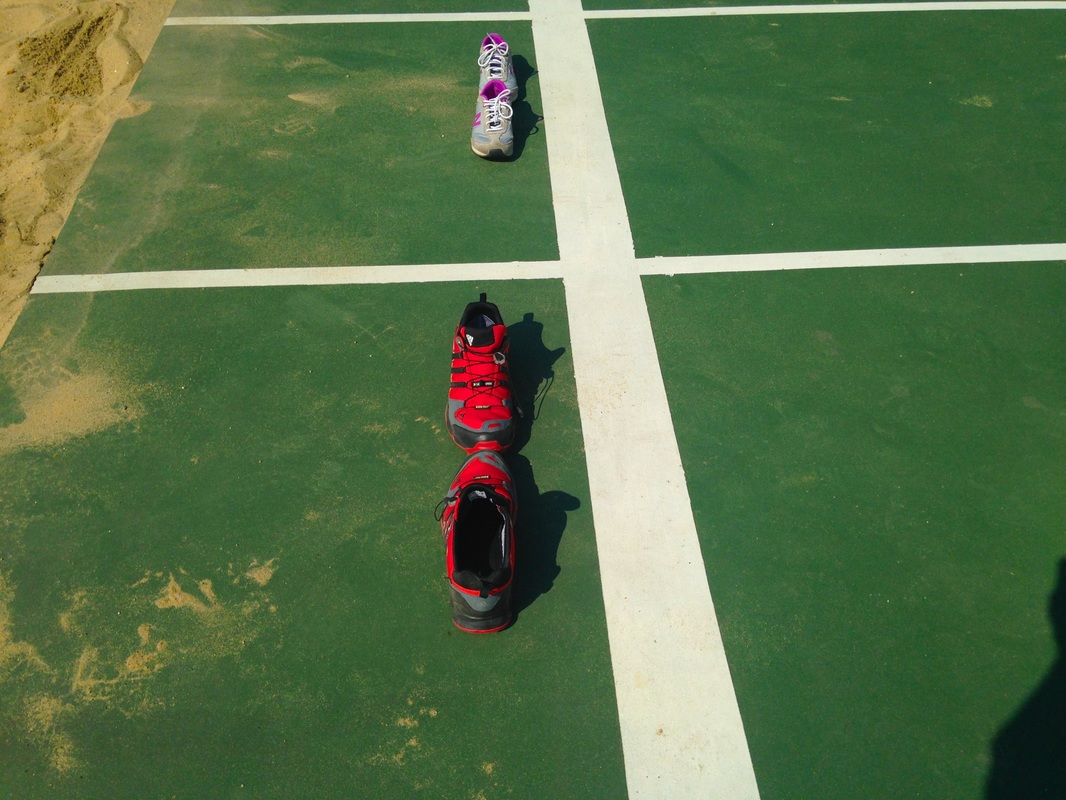
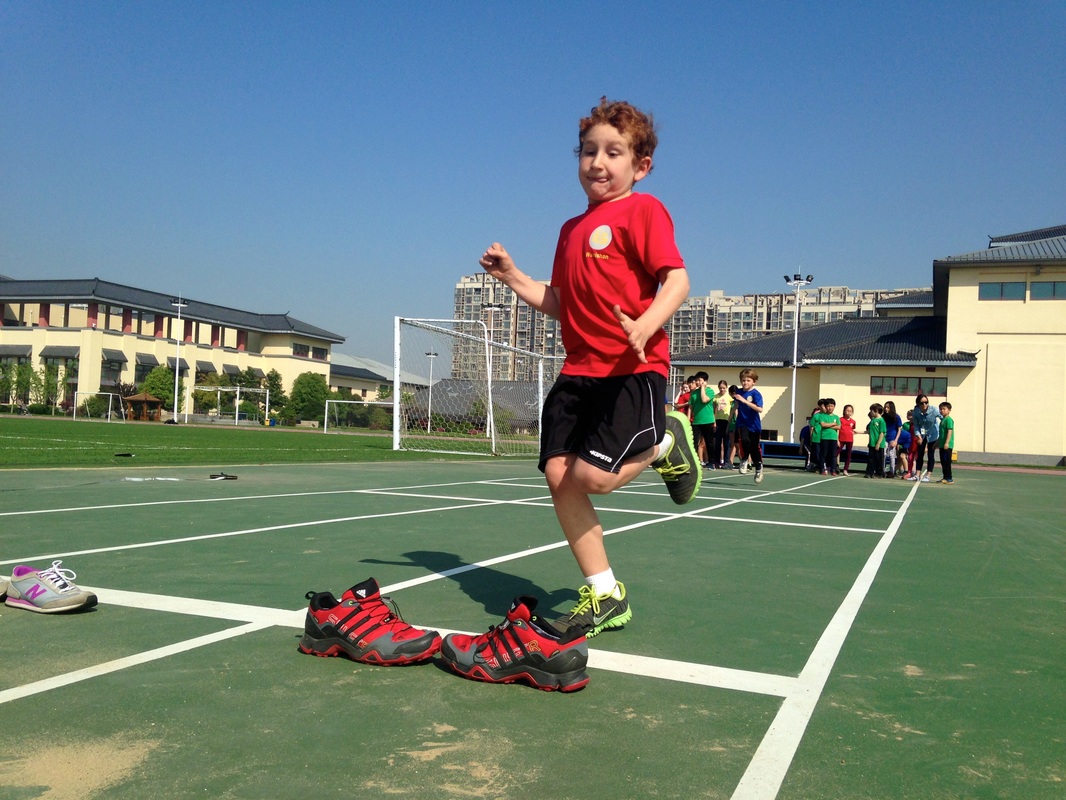
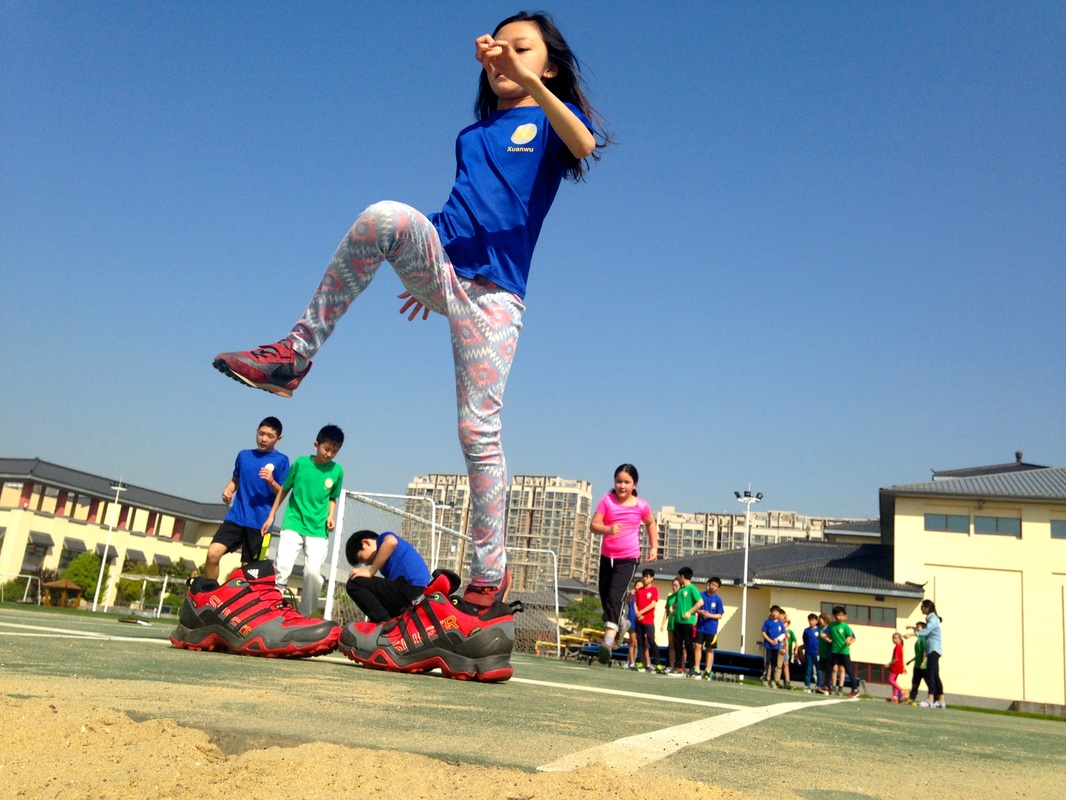
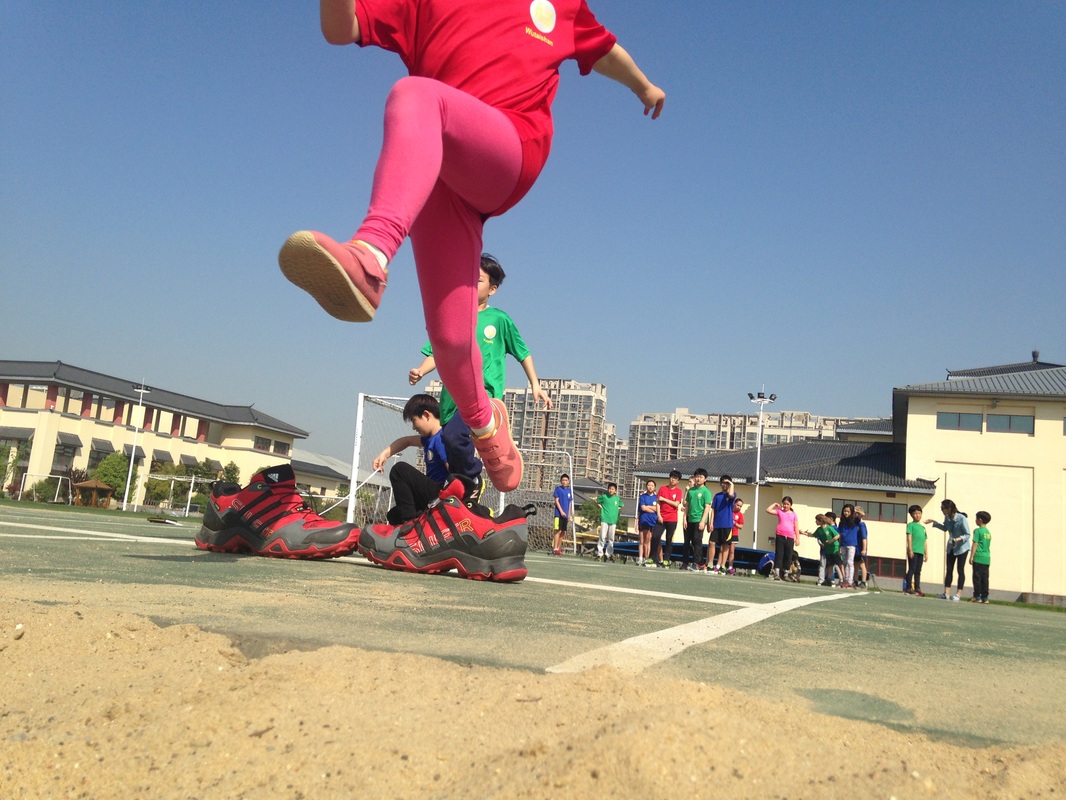
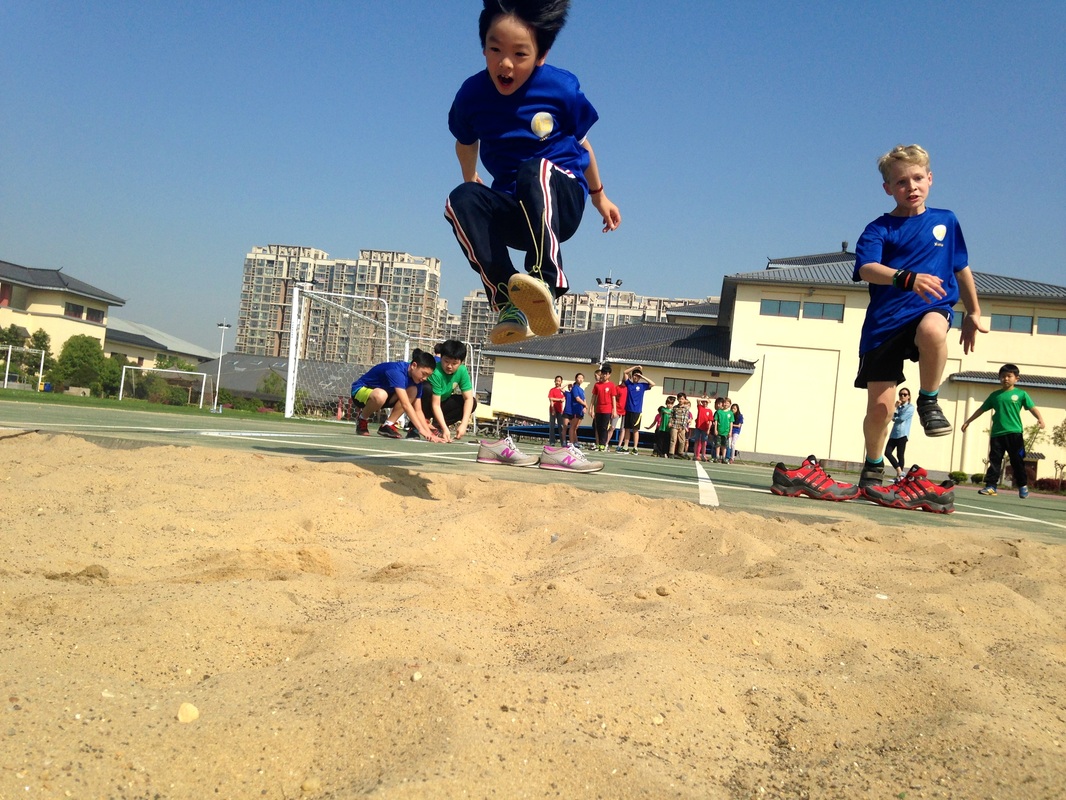
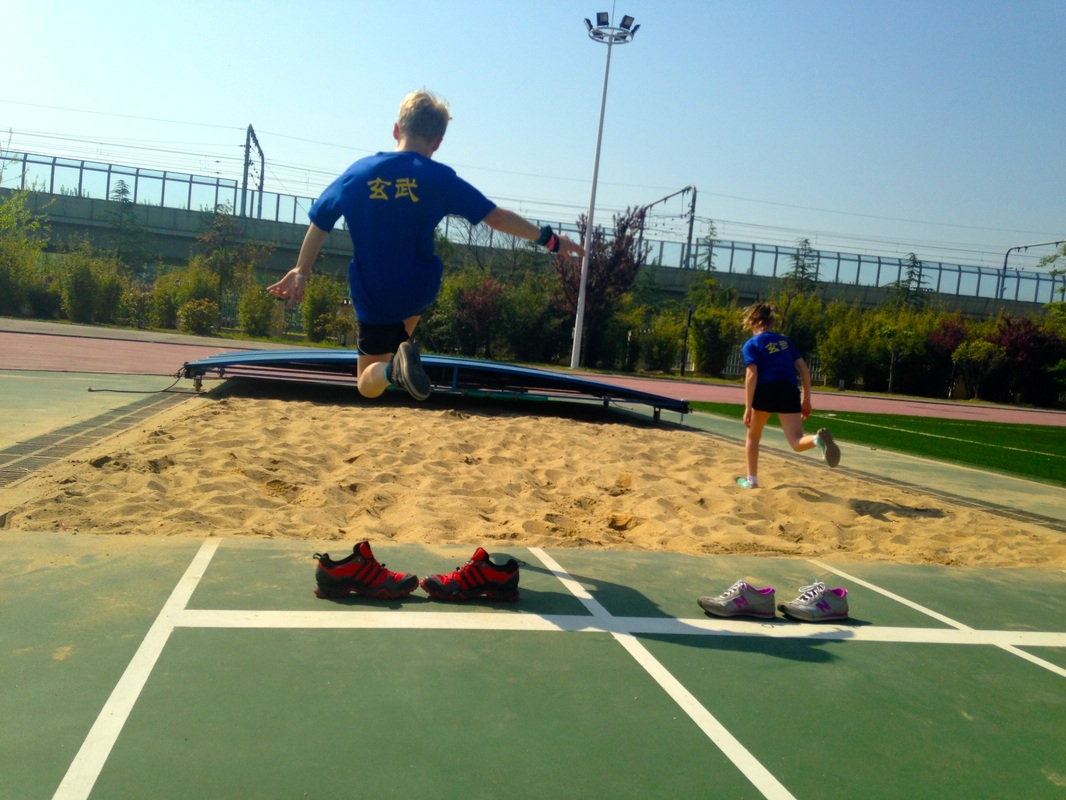
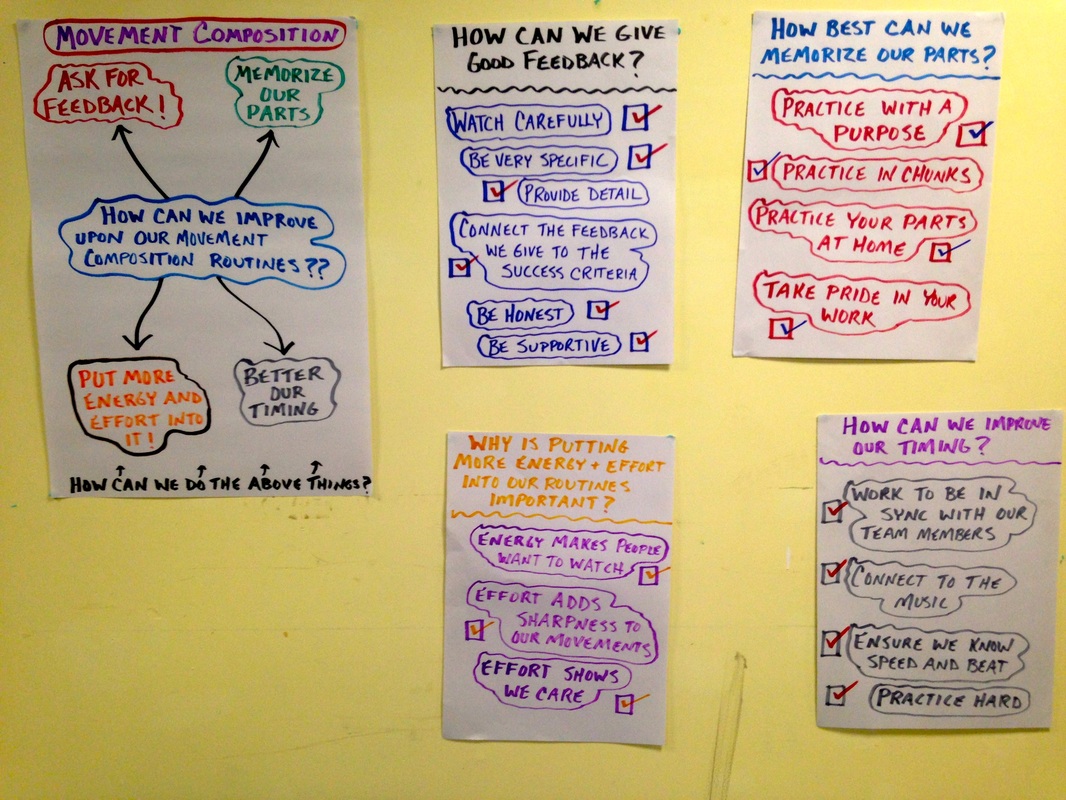
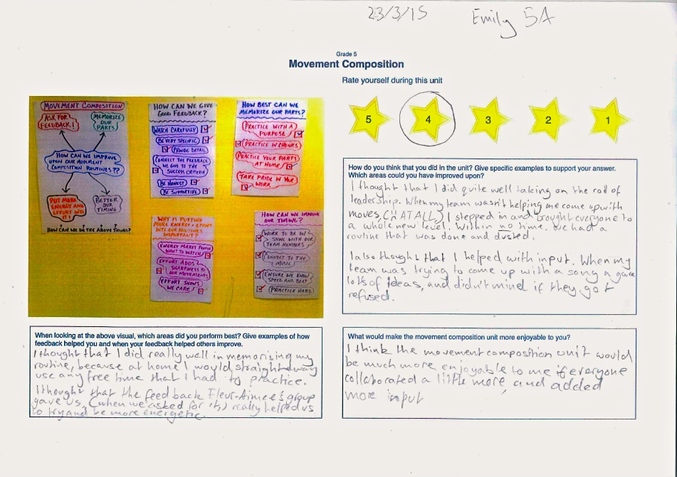
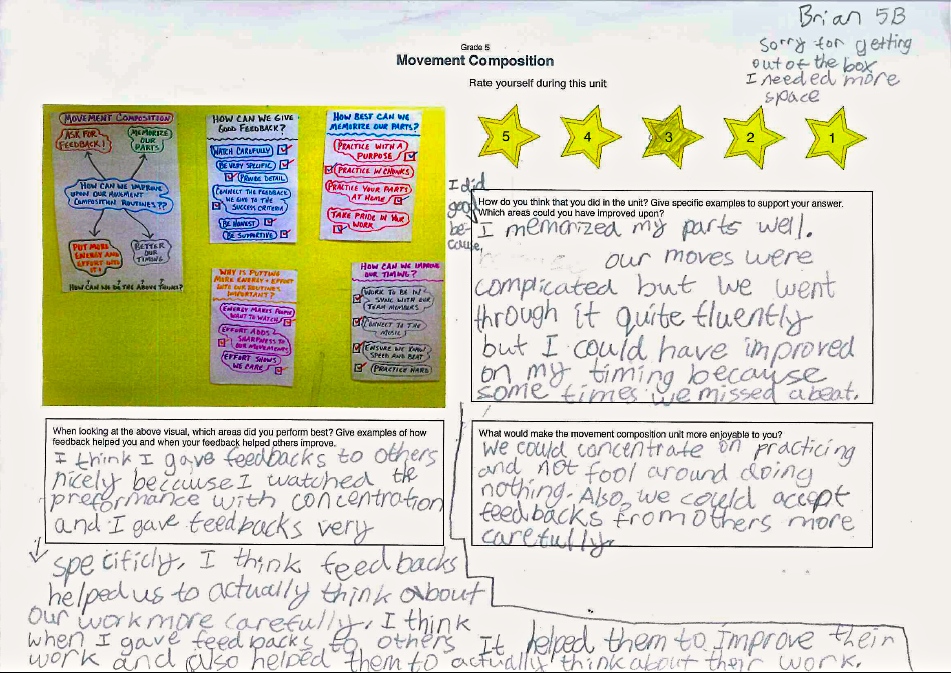
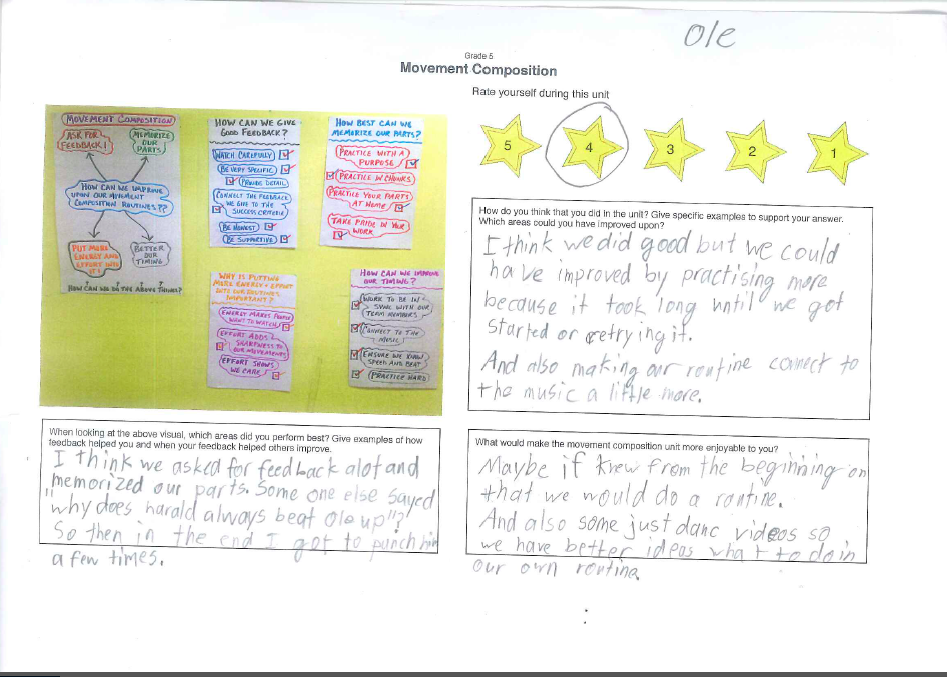
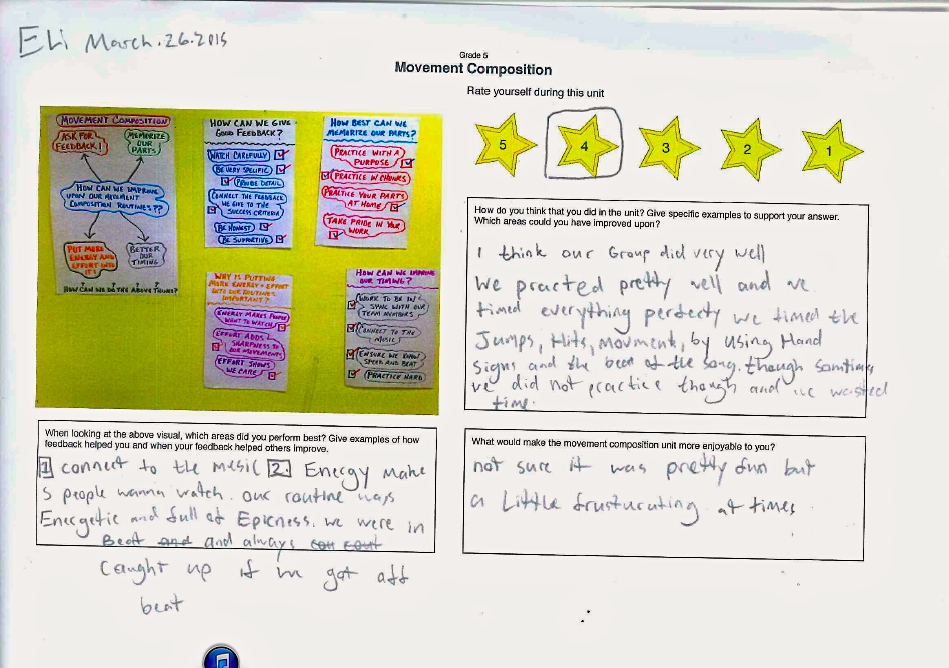
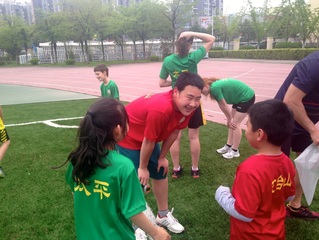
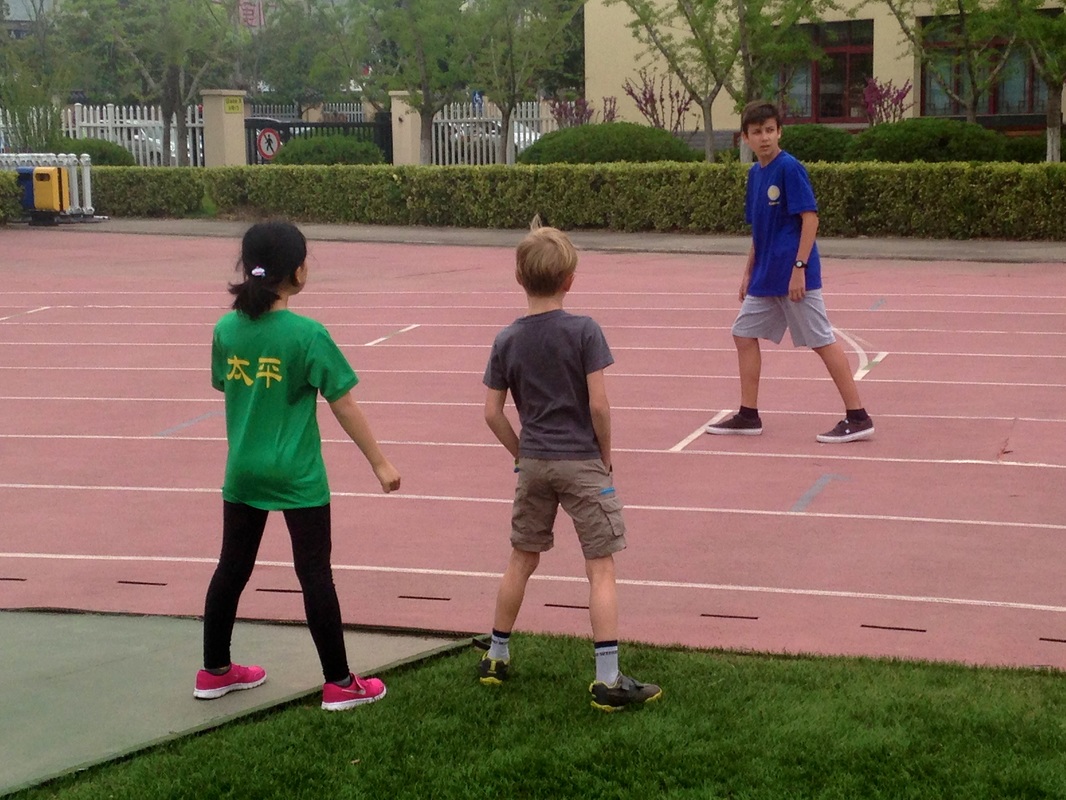
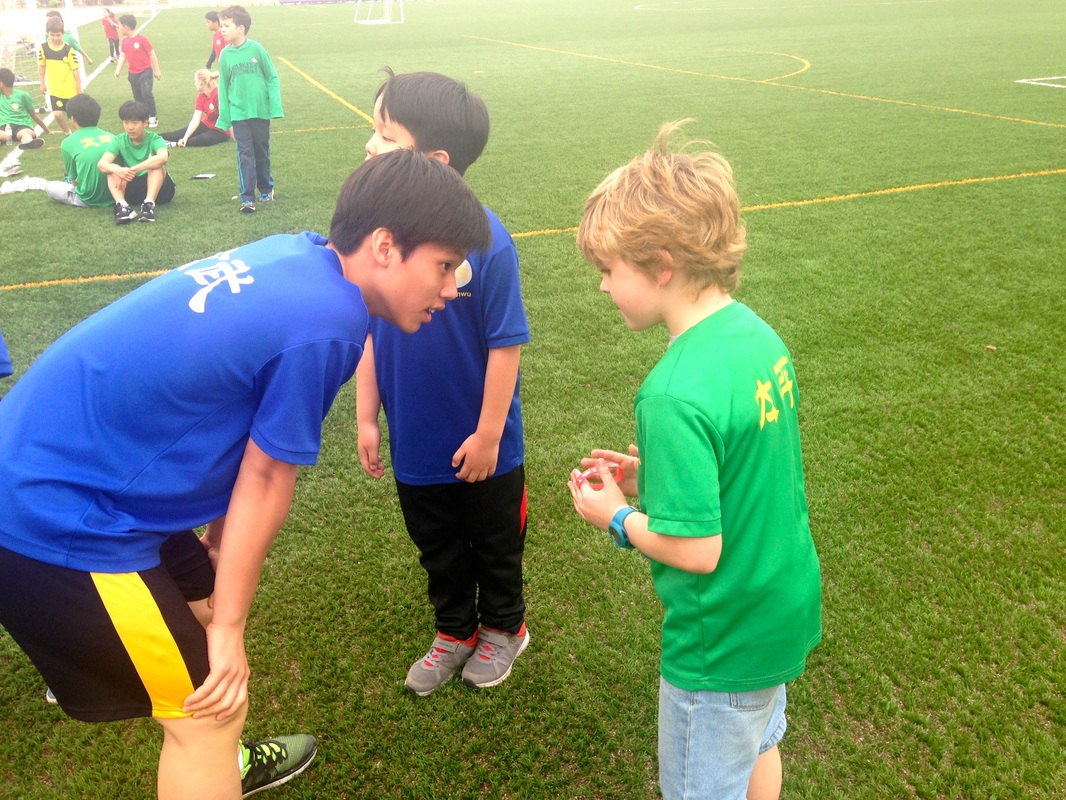
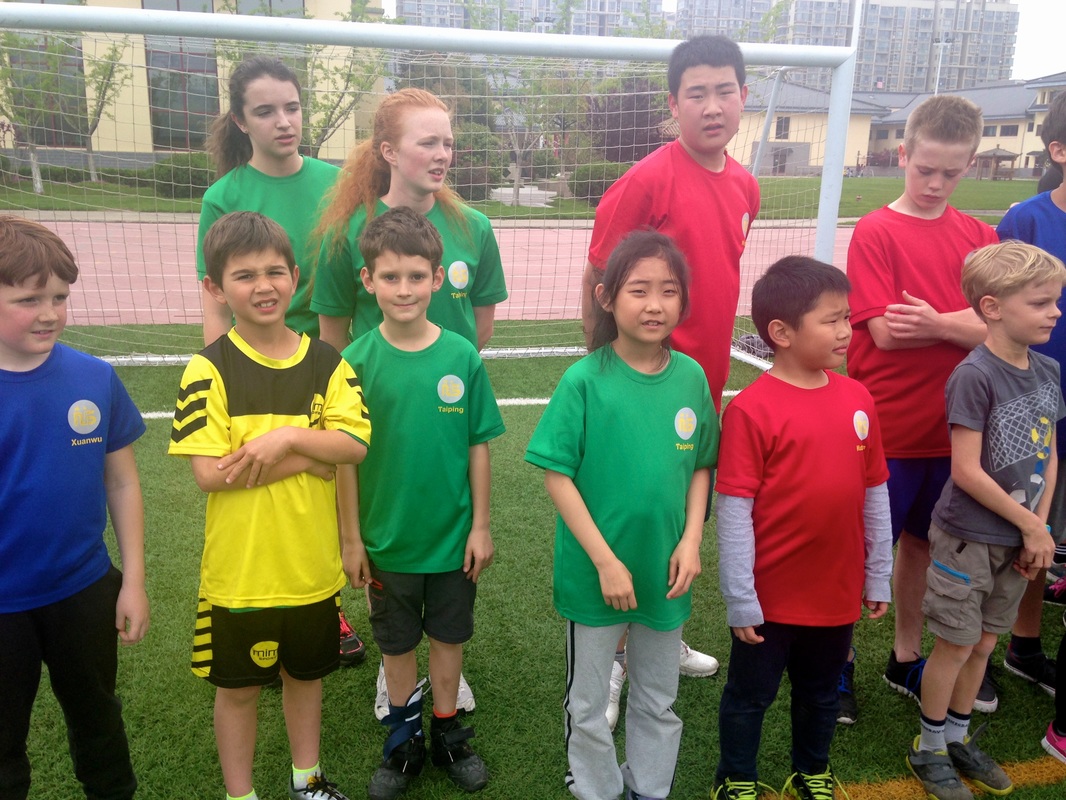
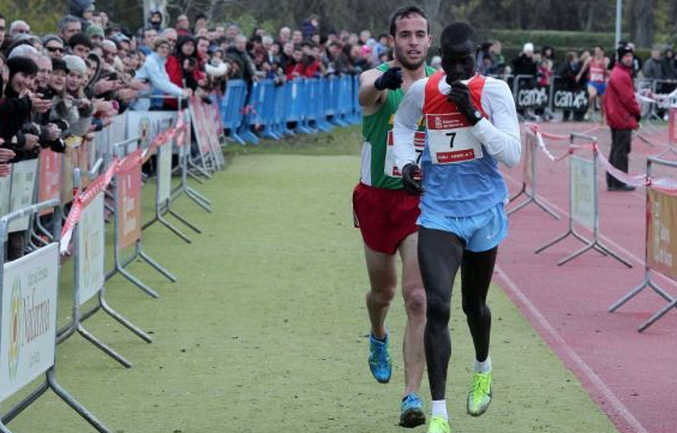
 RSS Feed
RSS Feed
